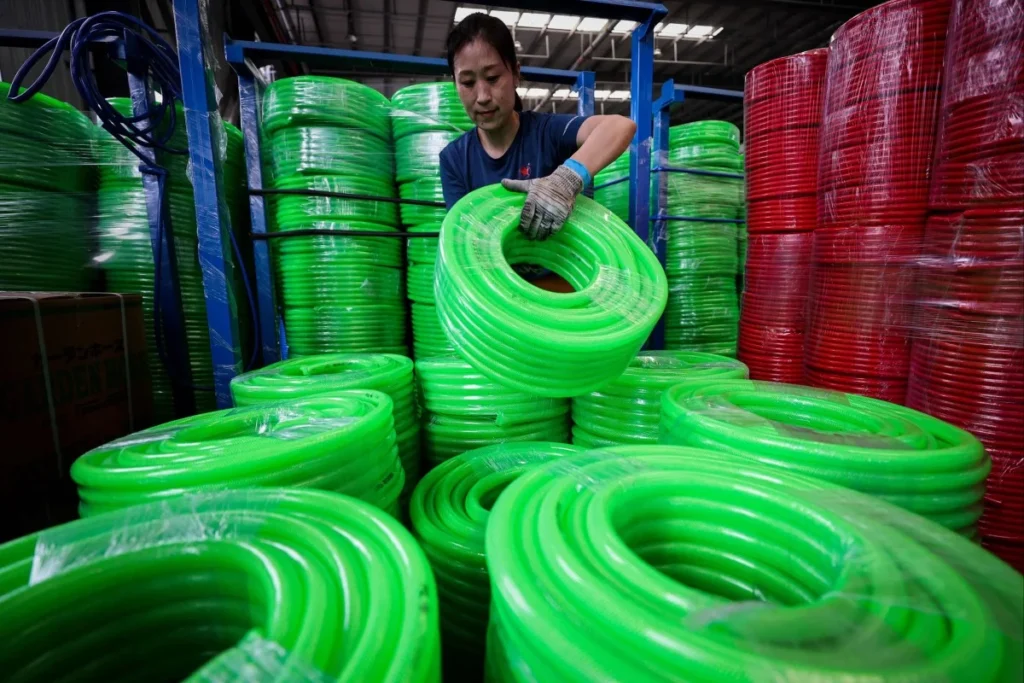In recent years, China’s economic landscape has shifted dramatically, steering away from the double-digit growth rates that characterized its economy for decades. As the second-largest economy in the world experiences a slowdown, the ripple effects are felt across the Asian continent, prompting neighboring nations to reassess their economic strategies and alliances. This article explores how China’s economic downturn is reshaping the dynamics within Asia, impacting trade, investment flows, and regional economic policies.
China’s Economic Slide Affects Neighbors
The slowdown of China’s economy has sent shockwaves through the Asian markets that have long relied on its robust economic activities. Countries like South Korea, Japan, and Taiwan, which export substantial amounts of industrial components and raw materials to China, are seeing a noticeable dip in demand. This reduction in trade volume is not just a temporary blip but a disturbing trend that could signify a long-term economic shift in the region. Additionally, Southeast Asian countries, which have been pivotal in the supply chain for Chinese manufacturing, are experiencing disruptions. This downturn is further exacerbated by China’s internal policy shifts towards self-reliance and decreased import dependence.
Furthermore, the tourism sectors in Asia are also feeling the pinch as China, once a major source of outbound tourists, tightens travel restrictions in response to ongoing health concerns and economic priorities. Countries like Thailand and Malaysia, which used to see millions of Chinese tourists each year, have reported significant downturns. This has prompted these nations to pivot towards attracting tourists from other regions, a shift that requires substantial investment and time to develop new market strategies and connections.
The real estate and construction sectors in nearby regions are also experiencing a direct impact from China’s economic slowdown. The reduced demand for building materials has led to a decrease in prices and has dampened the growth prospects of industries related to construction in these economies. This is particularly poignant for countries that have been riding the wave of China’s expansive urban development plans, which are currently seeing a scale-back as China refocuses on its domestic economic challenges.
Asian Economities Scramble to Adjust
In response to China’s economic deceleration, Asian economies are making rigorous adjustments. Nations like India and Vietnam are increasingly viewing this as an opportunity to attract foreign direct investment (FDI) that might have previously favored China. With competitive labor markets and increasingly favorable business policies, these countries are positioning themselves as new manufacturing hubs capable of filling the void left by China’s economic retraction.
Economic policymakers across Asia are also recalibrating their trade policies and alliances. There is an emerging focus on strengthening intra-regional trade agreements such as the Regional Comprehensive Economic Partnership (RCEP), and enhancing collaborations within frameworks like ASEAN to mitigate the dependency on the Chinese market. These shifts signify a strategic diversification intended to shield economies from future economic shocks and to tap into new growth areas independent of China’s economic performance.
Additionally, the technological and digital sectors in Asia are seeing a new form of rivalry and cooperation as countries like South Korea and Japan invest heavily in next-generation technologies. These investments are not only aimed at reducing reliance on Chinese tech exports but also at claiming a stake in the global tech market, potentially replacing some elements of Chinese dominance in telecommunications, semiconductors, and artificial intelligence. This strategy, however, requires substantial investment in research and development, and a rethinking of current industrial policies.
China’s economic downturn is undeniably reshaping the landscape of Asian economies, compelling neighboring nations to navigate this new normal with strategic shifts and policy recalibrations. As these countries adjust to the changing economic tides, the future of Asia’s economic landscape appears poised for a realignment that could redefine regional economic orders and global economic patterns. Amidst these shifts, the resilience and adaptability of these economies will be crucial in determining their future economic trajectory and their place in the global arena.









